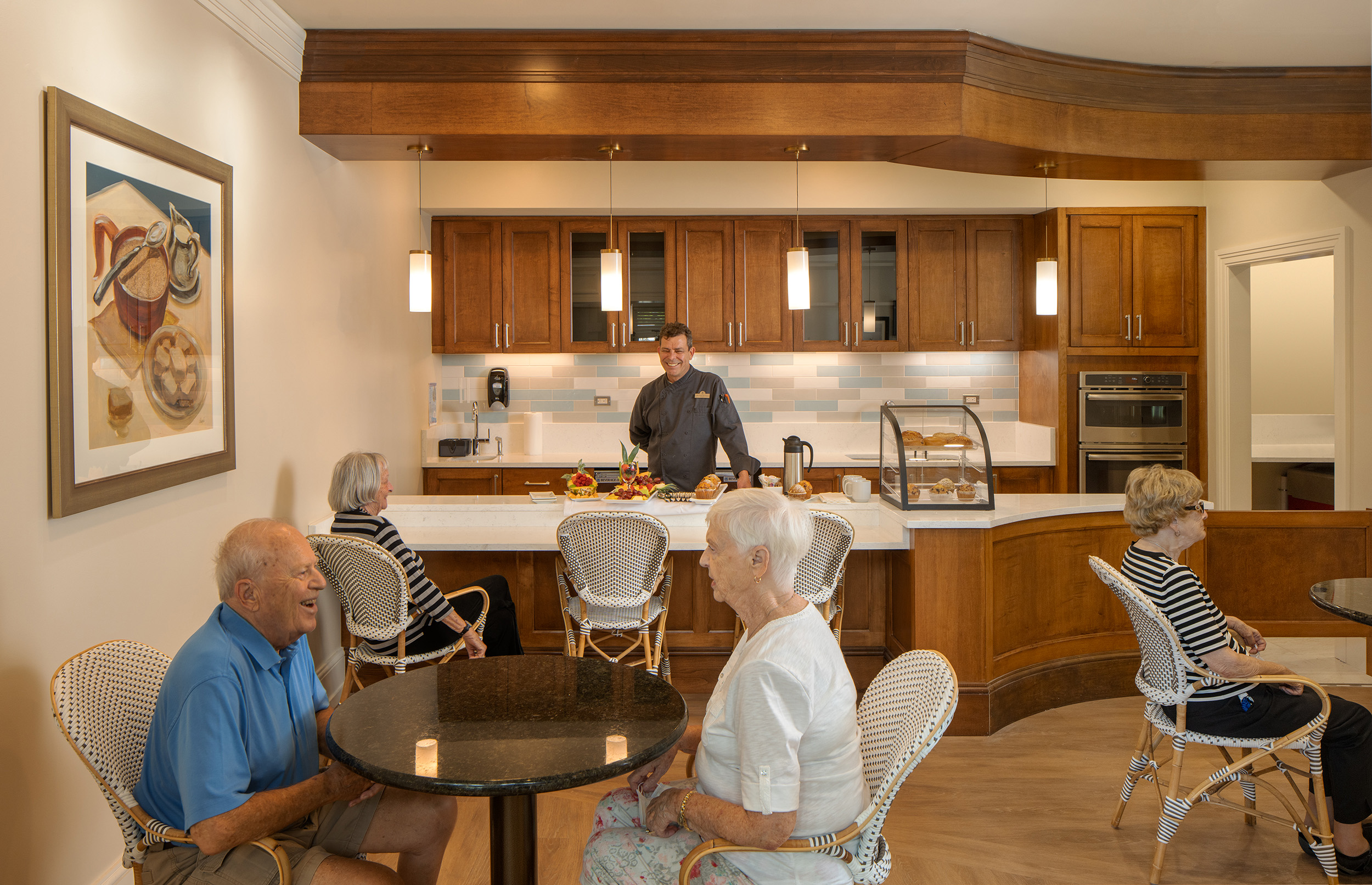Here are eight senior living communities that offer their residents memory care, an important service for residents who need this specialized service.
1. Anthology of Tuckahoe | Henrico, Va.
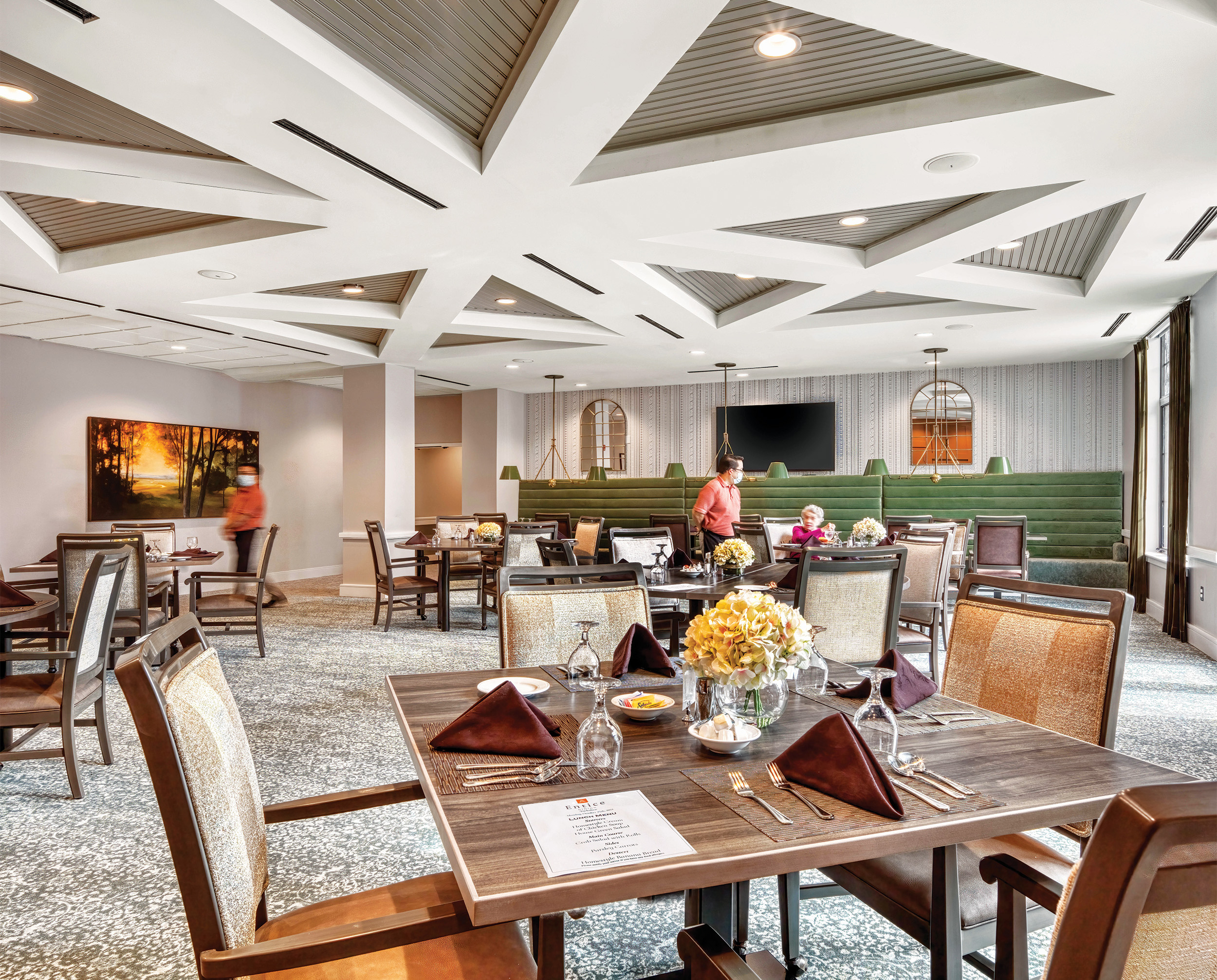
CA Ventures put its stamp on personalized health and wellness—physical therapy sessions, walkable courtyards, craft and game rooms, a fitness center, a wellness spa/salon—for this 150-unit community 12 miles outside Richmond. BKV Group (architect, interior designer, SE, MEP, specifications, construction administrator, codes consultant) teamed with Kimley-Horn (CE, landscape architect), Clevenger (foodservice), and Brinkmann Constructors (GC) to deliver 56 independent living, 62 assisted, and 32 memory care residences.
2. Clarendale Clayton | Clayton, Mo.

Ryan Companies (developer/GC) and Life Care Services (operator) joined forces on this 13-story, 406,033-sf senior living environment—195 independent living, 66 assisted living, and 20 memory care units—eight miles west of St. Louis on the site of an old Schnucks grocery store. The project team, which included Ryan A+E (design architect), ACI Boland Architects (AOR), Oculus Inc. and RDG Planning and Design (interior designers), used lightweight cold-formed metal framing (prefabricated by Eisen Group) to save time.
3. River Tower | Norfolk, Va.
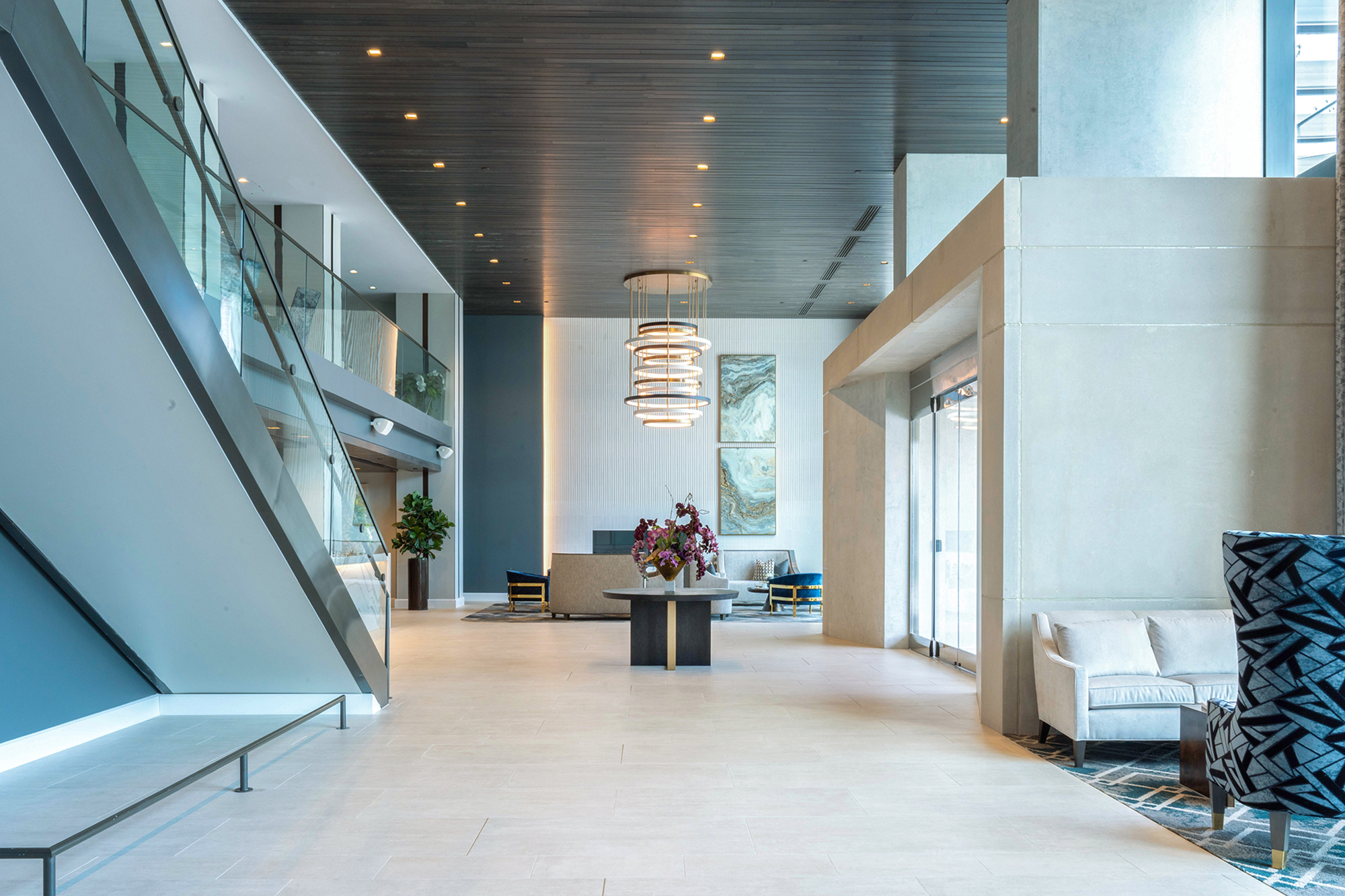
Architecture firm three was assisted by Clark Nexsen (AOR), StudioSIX5 (interior design), and W.M. Jordan (GC) for this $145 million, 527,770-sf addition to owner Harbor Edge’s Norfolk waterfront complex. Healthcare services via True LifeCare provide residents of the 147 apartments with assisted living, memory care, and skilled nursing services, as needed. The amenities menu includes a spa, beauty salon, barber shop, card and game rooms, indoor pool, billiards parlor, golf simulator, art studio, and theater.
4. Sunrise at New Dorp | Staten Island, N.Y.
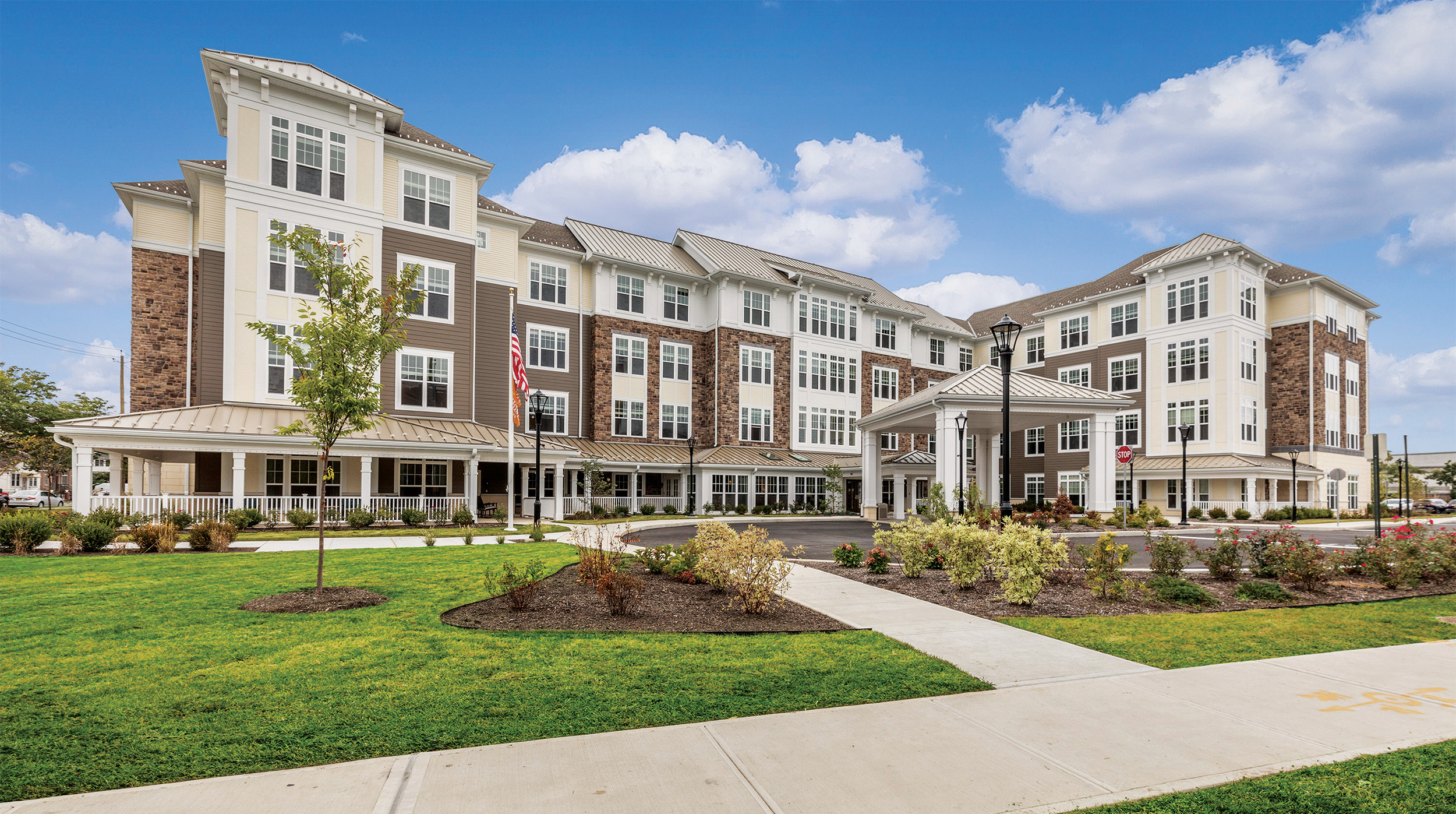
This $32 million community serves more than 120 residents in 45 assisted living and 50 memory care residences. A salon, bistro, theater, lounge, dining room, and multi-use activity space are among the amenities. Moseley Architects (architect) managed the project team of Ehlert Bryan (SE), Bohler Engineering (CE), Greenman-Pedersen (MEP), PWC Companies (construction consultant), and KBE Building Corp. (GC) for Sunrise Senior Living (owner).
5. Vista West | Madison, Wis.

AG Architecture designed this $46 million mix of 144 independent living studio and one- and two-bedroom apartments—some with kitchenettes—and 30 memory care units (36 beds) for owner-developer Capri Communities. A floating Residential Care Apartment Complexes license allows the independent living units to support assisted living healthcare services. Social programming includes hiking groups, PLATO discussions, casino nights, author talks, field trips to Olbrich Botanical Gardens, and a partnership with Trek bikes.
Bioswales, a natural prairie, and a sustainable roof retain stormwater runoff; the complex is projected to save $70,000/year in energy costs. On the team: Urban Assets (community engagement consultant), Direct Supply Aptura (interiors), Pierce Engineers (SE), D’Onofrio Kottke and Associates (CE, landscape design), and Stevens Construction (GC).
6. Kempton of Charleston | Charleston, S.C.
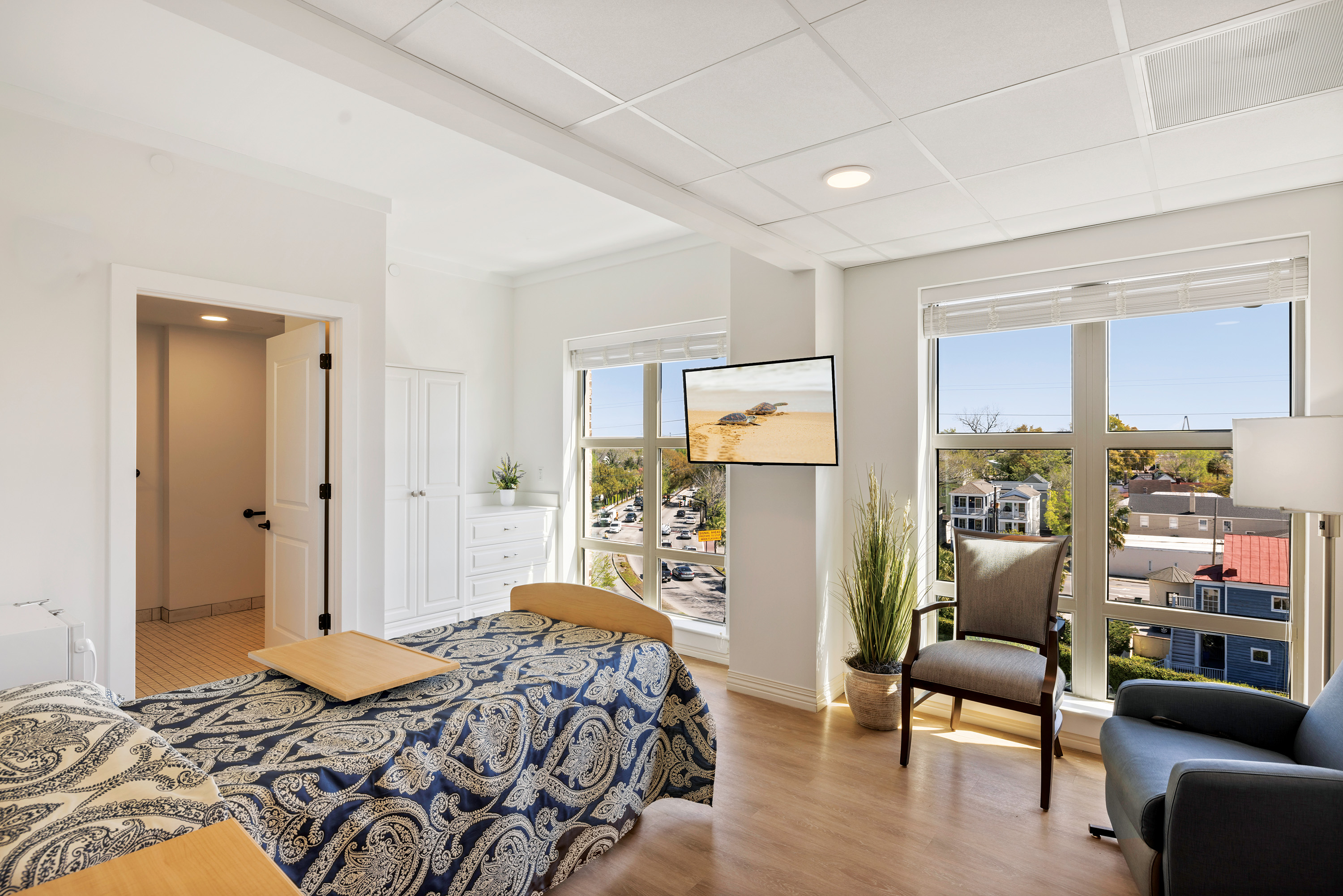
McMillan Pazdan Smith Architecture (architect), Fine Tuned Structures (SE), Forsberg Engineering & Surveying (CE), 4EA Building Science (envelope consultant), and Trident Construction Group (GC) designed and built this 92-unit, $27.9 million retirement community with resiliency foremost in mind. The five-story structure was built to keep operating despite hurricane-force winds. Resident rooms and dining areas are on upper floors in case of flooding. Hamilton Development was the developer; Liberty Senior Living is the owner. Also contributing: Hush Acoustics (acoustics consultant) and DesignWorks (landscape architect).
Kempton of Charleston has 50 assisted living studio and one- and two-bedroom apartments at, as well as 21 memory care studios with companion rooms and 21 skilled nursing studios with companion rooms. The property is less than a mile from the Medical University of South Carolina.
7. Wesley at Tehaleh | Bonney Lake, Wash.
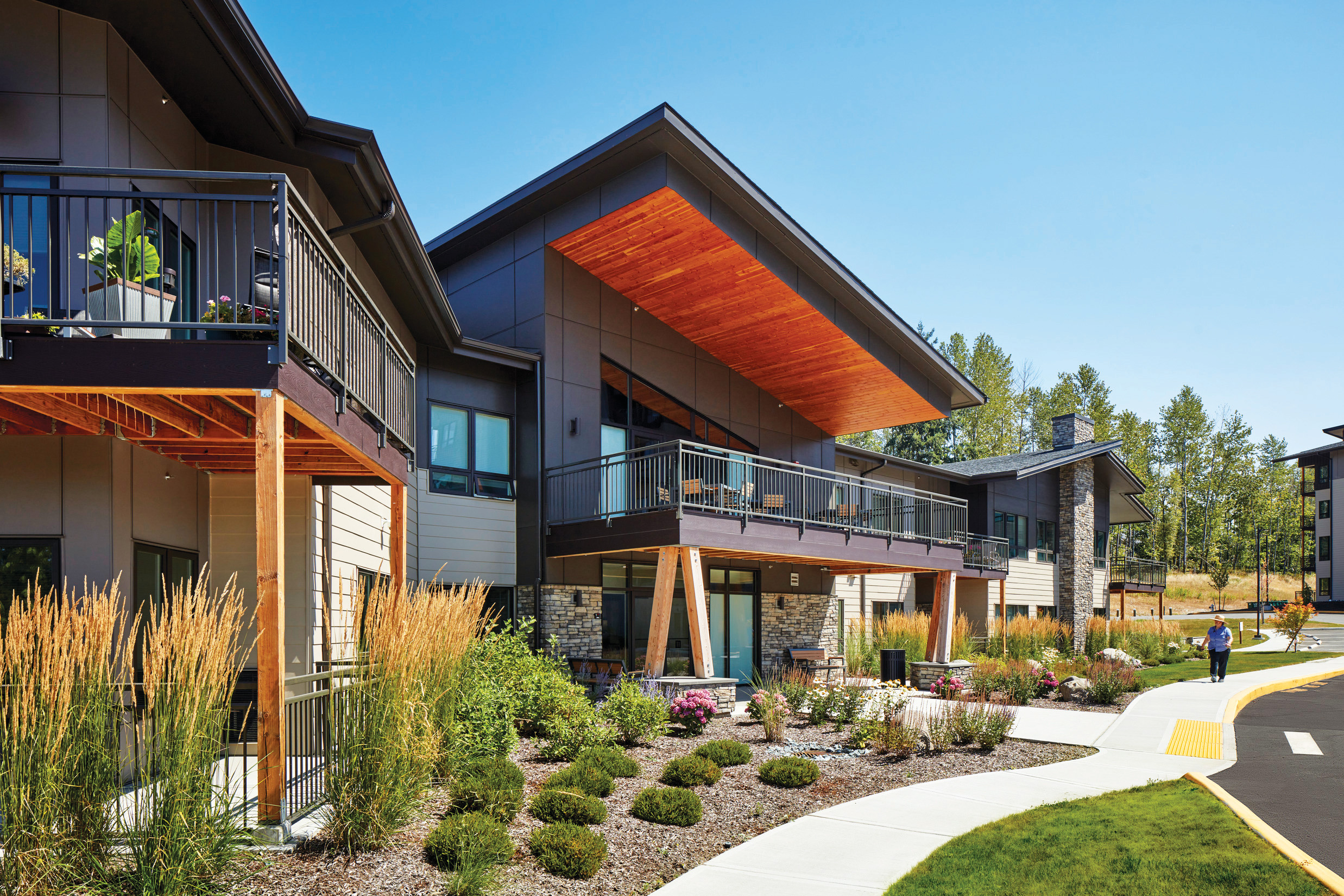
A trail system unites the 400,000-sf Wesley at Tehaleh campus near Seattle, where owners Presbyterian Homes & Services and Wesley Homes Pierce County provide 168 independent living, 42 catered living, and 18 memory care residences, plus a 24,000-sf town center. Cuningham (architect, landscape architect) and partners Senior Lifestyle Design (interiors), AHBL (SE, CE), Steen Engineering (MEP), and Ryan Companies (GC) made wellness, building performance, and energy modeling key components of the project.
8. Watercrest | Sarasota, Fla.
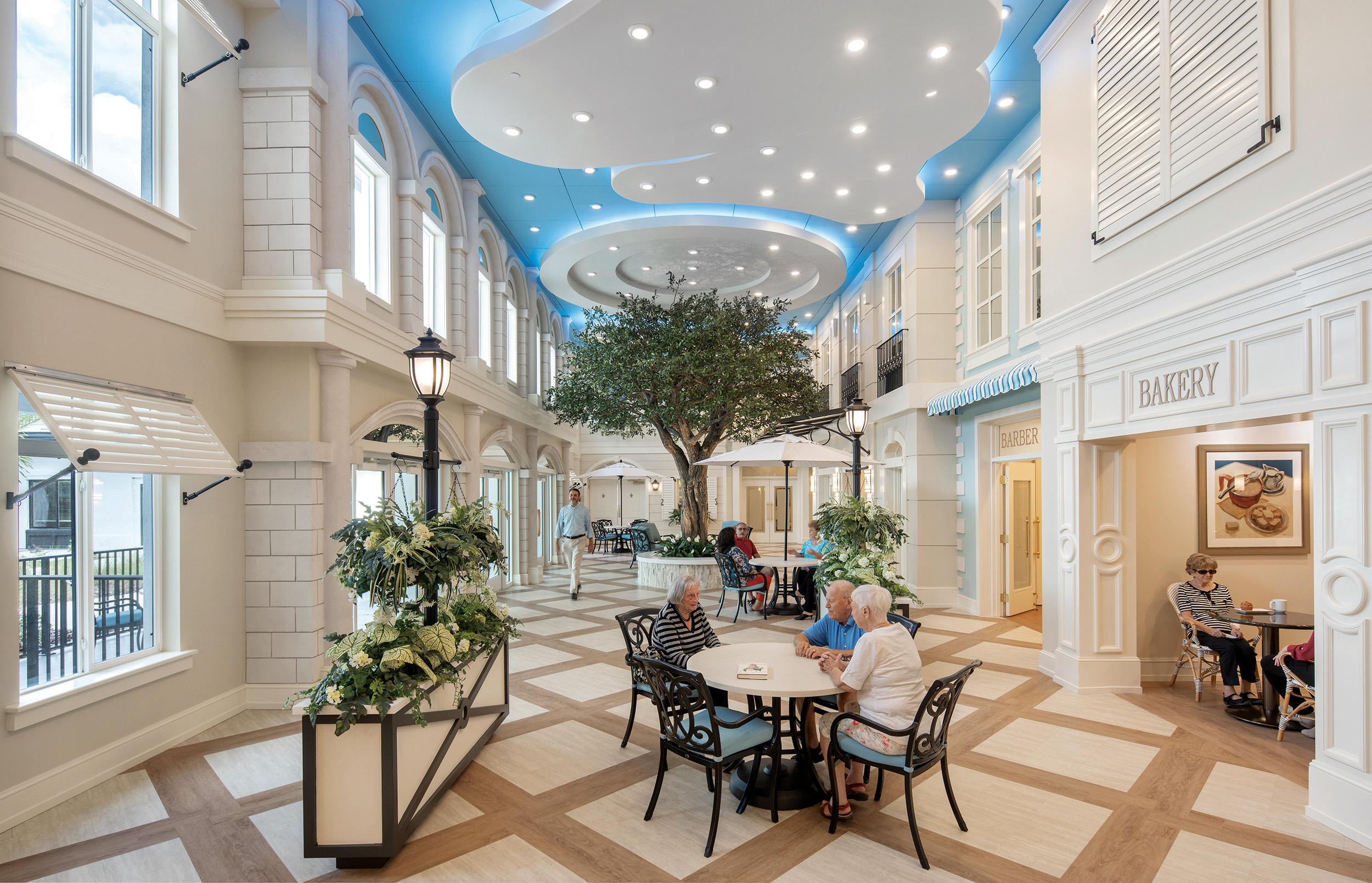
A cooking exhibition is one of many aging-in-place activities shared by residents of the 72 active adult and 96 assisted living residences at Watercrest. Residents of the 32 memory support units occupy “flexible households” at each end of an indoor streetscape. United Properties and Watercrest Senior Living Group (owners) provided senior-friendly drawer dishwashers, raised wall ovens, lowered microwaves, drop-in cooktops, and pullout shelves.
HKS (architect) was joined by Interior Design Associates (interiors), TRC Worldwide Engineering (SE), Morris Engineering and Consulting (CE), Telios Engineering (MEP), Kurt R. Crist Landscape Architect, Keycom (low-voltage systems), Corsi Associates (foodservice), and Walker Construction (GC).
ALSO SEE:
10 compelling multifamily developments debut in 2022
Top 106 multifamily housing kitchen and bath amenities – get the full report
7 tips for designing fitness studios in multifamily housing developments
9 noteworthy multifamily developments to debut in 2022
7 things to know about designing for Chinese multifamily developers
Related Stories
| Oct 15, 2014
Harvard launches ‘design-centric’ center for green buildings and cities
The impetus behind Harvard's Center for Green Buildings and Cities is what the design school’s dean, Mohsen Mostafavi, describes as a “rapidly urbanizing global economy,” in which cities are building new structures “on a massive scale.”
| Oct 12, 2014
AIA 2030 commitment: Five years on, are we any closer to net-zero?
This year marks the fifth anniversary of the American Institute of Architects’ effort to have architecture firms voluntarily pledge net-zero energy design for all their buildings by 2030.
| Sep 24, 2014
Architecture billings see continued strength, led by institutional sector
On the heels of recording its strongest pace of growth since 2007, there continues to be an increasing level of demand for design services signaled in the latest Architecture Billings Index.
| Sep 22, 2014
4 keys to effective post-occupancy evaluations
Perkins+Will's Janice Barnes covers the four steps that designers should take to create POEs that provide design direction and measure design effectiveness.
| Sep 22, 2014
Sound selections: 12 great choices for ceilings and acoustical walls
From metal mesh panels to concealed-suspension ceilings, here's our roundup of the latest acoustical ceiling and wall products.
| Sep 9, 2014
Using Facebook to transform workplace design
As part of our ongoing studies of how building design influences human behavior in today’s social media-driven world, HOK’s workplace strategists had an idea: Leverage the power of social media to collect data about how people feel about their workplaces and the type of spaces they need to succeed.
| Sep 7, 2014
Behind the scenes of integrated project delivery — successful tools and applications
The underlying variables and tools used to manage collaboration between teams is ultimately the driving for success with IPD, writes CBRE Healthcare's Megan Donham.
| Sep 3, 2014
New designation launched to streamline LEED review process
The LEED Proven Provider designation is designed to minimize the need for additional work during the project review process.
| Sep 2, 2014
Ranked: Top green building sector AEC firms [2014 Giants 300 Report]
AECOM, Gensler, and Turner top BD+C's rankings of the nation's largest green design and construction firms.
| Sep 2, 2014
Harvard study: Nation unprepared to meet housing needs of aging population
The number of adults in the U.S. aged 50 and over is expected to grow to 132 million by 2030. But housing that is affordable, physically accessible, well-located, and coordinated with supports and services is in too short supply.


